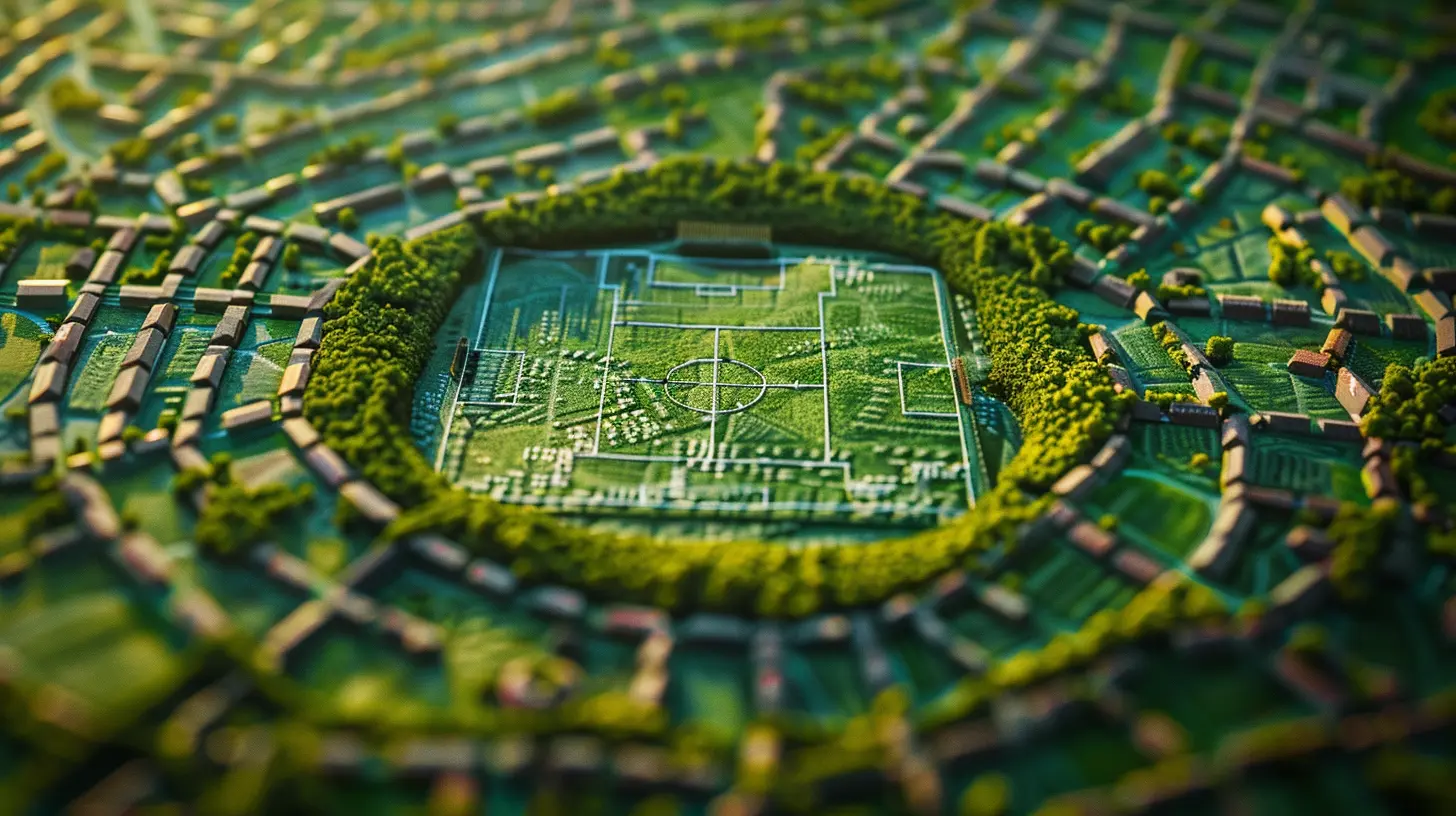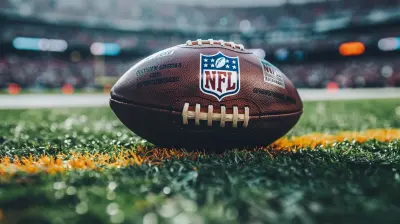Strategies for Winning the Midfield Battle
9 October 2025
If football was a war (and hey, sometimes it sure feels like one), then the midfield is the battlefield where the war is often won or lost. It's the engine room, the heart of the pitch, the chessboard where tactics clash and momentum shifts. Whether you're coaching a youth team, managing at semi-pro level, or simply a die-hard fan trying to understand the game's finer points, mastering the midfield dynamic is crucial.
So, what's the secret sauce to winning the midfield battle? Let’s dig in.
Why the Midfield Matters More Than You Think
Ever heard the phrase “control the midfield, control the game”? Yeah, that one isn’t just a cliché—it’s gospel truth in football. The midfield is where your team connects defense to attack. It's where possession is won, lost, and recycled. A strong midfield can dictate pace, frustrate opponents, and carve open defenses with a single pass. It’s like the brain of your formation—it processes everything and sends clear signals.When your midfield is overrun? You’re stuck in damage control. When you’re dominating it? You’re writing the script of the match.
1. Know Your Midfield Roles
Before you even think about strategies, let's understand the roles. Midfielders aren’t just “players in the middle.” They come in flavors:- Defensive Midfielders (CDM): Your anchors. They break up play and offer cover to your backline. Think Casemiro or Declan Rice.
- Central Midfielders (CM): The box-to-box warriors. They're everywhere—breaking up play, passing, and even sneaking a goal.
- Attacking Midfielders (CAM): The playmakers. They find pockets of space, unlock defenses, and link up with forwards.
- Wide Midfielders/Wingers: Not always considered midfielders in modern setups, but they do drop into the middle third and help create width and overloads.
Understanding these roles helps in choosing the right combo for your game plan. It’s a bit like mixing ingredients—a dash of creativity, a spoonful of tenacity, and a pinch of positional awareness.
2. Formations: Your Tactical Backbone
The formation you use heavily influences how you win the midfield. Let’s break down a few popular setups and what they offer:4-3-3: The Balanced Beast
Three central midfielders give you both creativity and solidity. You can go with a holding midfielder and two more advanced ones for fluidity. It lets you press high and drop deep when needed.4-2-3-1: The Modern Classic
Two holding midfielders provide control, while the CAM can roam into spaces. Solid defensively and versatile during transitions.3-5-2: Dominate the Middle
Five midfielders. That's heavy artillery. Best used when you want to suffocate the opponent’s midfield and dictate tempo.4-4-2: Old School Can Still Work
Often criticized as outdated, but with the right midfield duo, it can still hold its own. Requires two incredibly hardworking midfielders though—think lungs of steel.Stick to a formation that complements your players’ strengths. Don’t try to squeeze square pegs into round holes.
3. Pressing and Counter-Pressing: Win It Back, Fast
Ever watch Klopp's Liverpool or Guardiola’s Man City? What they're doing is almost hypnotic—they lose the ball and instantly swarm the opposing midfield.This isn’t just running like headless chickens. It’s calculated chaos—called counter-pressing or Gegenpressing.
Why Does It Work?
When you win the ball back immediately after losing it, the opposition is disorganized. Their midfielders aren’t in their shape yet. That’s your chaos window.Set your midfield to anticipate these moments. They shouldn’t just defend; they should be triggers for the next attack.
4. Positional Awareness: Intelligence over Pace
Let’s get one thing clear—speed is great, but in midfield, brains beat brawn.A midfielder who knows where to be, who reads the game two steps ahead—now that’s gold. Think Sergio Busquets. Not the fastest, not the flashiest, but always in the right place, always a second ahead.
Encourage your midfielders to:
- Scan the pitch constantly
- Read passing lanes
- Understand opponent patterns
- Identify potential overloads
This awareness prevents gaps, supports pressing, and keeps your team compact.
5. Create Overloads in the Middle
Want to dominate midfield? Don’t just match numbers—outnumber them.Creating a midfield overload means shifting players into central zones during possession. Maybe one of your fullbacks tucks into midfield. Or your striker drops deep, turning a 3v3 into a 4v3.
It sounds small, but in tight areas, that extra passing option is a game-changer. You retain possession, stretch the opponent, and create forward outlets.
6. Quick Transitions: Catch Them Off Guard
Possession is important, sure. But if you're too slow transitioning from defense to attack, you're letting the opponent form their midfield block again.Train your midfielders to:
- Make vertical passes early
- Spot forward runs
- Combine quickly in tight areas
Nothing frustrates a defense more than a midfield that breaks lines with speed and purpose. It’s like a hot knife through butter.
7. Technical Skills: Touch, Control, Pass
Let’s not forget the basics. All the tactics in the world won’t help if your midfielders can’t trap a ball or misplace easy passes.Drill them on:
- First touch under pressure
- Passing with both feet
- Turning in tight spaces
- Shielding the ball
A technically sharp midfield is like a well-oiled engine—it might not roar loudly, but it never breaks down.
8. Communication & Leadership
Here’s a golden tip: Your midfielders should never shut up.Seriously. They’re in the center of the storm. They see the backline, the forwards, the sidelines—everything. They should be constantly:
- Calling out passing options
- Warning about pressure
- Organizing shape
A silent midfield is usually a disjointed one. Develop leaders—players who command respect and talk sense.
9. Winning Duels and 50/50s
Physical battles still matter. Tackles, aerial duels, shoulder-to-shoulder moments—these happen constantly in midfield.To win them:
- Train core strength and balance
- Improve timing on tackles
- Teach clean but assertive play
- Stay on your feet—don't dive in unless you must
Win more of these battles, and you tilt momentum in your favor.
10. Understanding the Opponent's Midfield
Don’t just focus inward. Great midfield strategy means studying the other team.- Are their midfielders aggressive or passive?
- Do they overload one side?
- How do they transition?
- Who’s their main playmaker?
Once you spot a weakness—exploit it. Maybe one of their CMs doesn’t track back? Boom, overload that area. Maybe their lone CDM gets isolated? Press him fast and force errors.
It’s like poker—you don’t win by playing just your cards. You win by reading your opponent.
11. Set-Piece Strategies: Midfield Influence Off the Ball
Set-pieces are often overlooked when discussing midfield battles, but guess what? Midfielders often dictate how your team behaves during these moments.- Defensive midfielders guard the edge of the box for second balls
- Central midfielders pick up runners
- Attacking mids can distract or float in unnoticed
Train your midfield unit to remain alert during set-pieces. A single header or clearance in midfield can launch a counter-attack.
12. Energy Management: Pacing Through 90 Minutes
The midfield is high-intensity real estate. You can burn out easily if you don’t manage energy levels.Good strategies include:
- Rotating midfielders throughout the season
- Using substitutions wisely
- Training aerobic stamina
- Teaching players when to press and when to sit
Remember, it’s not about running more—it’s about running smart.
13. Mental Toughness: The Invisible Edge
Let’s be real—midfielders get pressured from all sides. They’re stuck in traffic all game.Mental strength matters. When the game gets chaotic, you need calm in the eye of the storm. Encourage habits like:
- Moving on from mistakes quickly
- Staying composed under pressure
- Staying focused even when leading
Championship-winning midfields have grit. They don’t panic. They don’t hide.
Wrapping It Up: Own the Middle, Own the Game
Winning the midfield battle isn’t about just one thing. It’s the sum of understanding roles, executing tactics, pressing smartly, maintaining shape, and staying sharp—physically and mentally.Every game is different, and the midfield is the place where those differences play out most intensely. So keep evolving. Keep watching. Keep learning. Because once you own the midfield... the rest of the pitch follows.
all images in this post were generated using AI tools
Category:
TacticsAuthor:

Nelson Bryant
Discussion
rate this article
1 comments
Anika Sharp
Winning the midfield is like hosting a dinner party: you need the right mix of ingredients and a dash of flair. Whether it’s a cheeky nutmeg or a well-timed tackle, remember: it’s not just about possession, it’s about making your opponents feel like they’ve arrived late to dinner!
October 21, 2025 at 7:43 PM

Nelson Bryant
Absolutely! Winning the midfield is all about the perfect blend of skill and strategy—just like a dinner party, where each play can create an unforgettable experience for your team and an uncomfortable one for your opponents!


